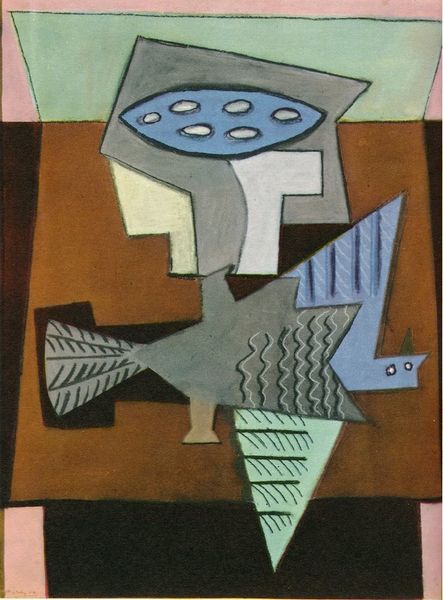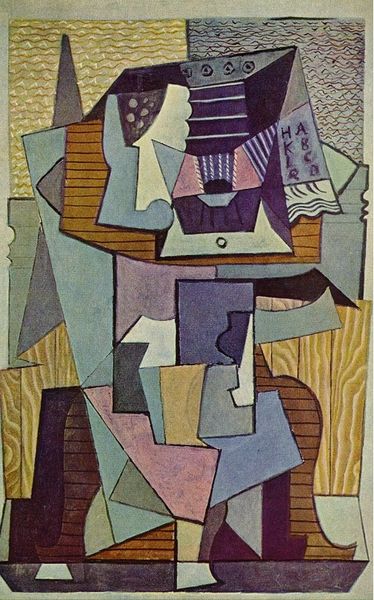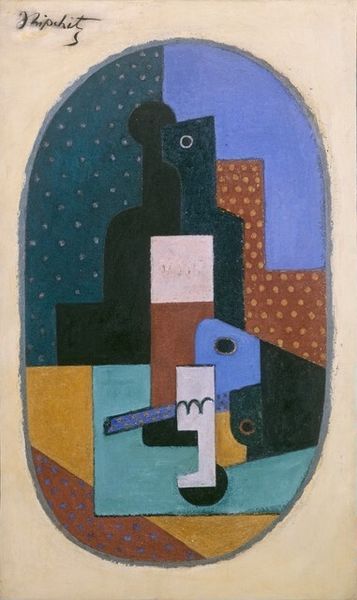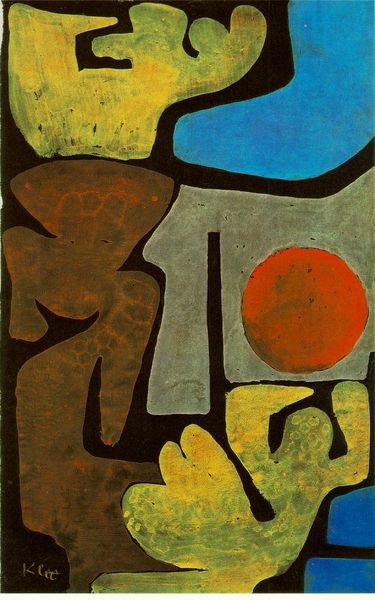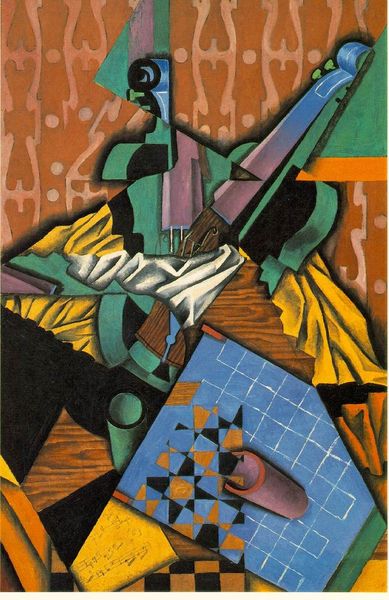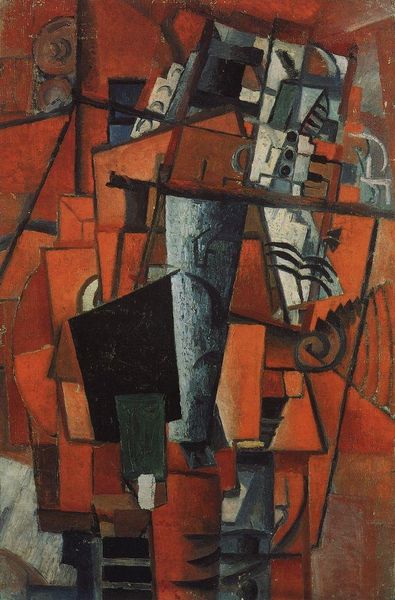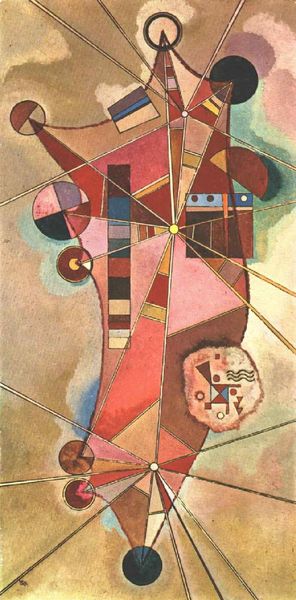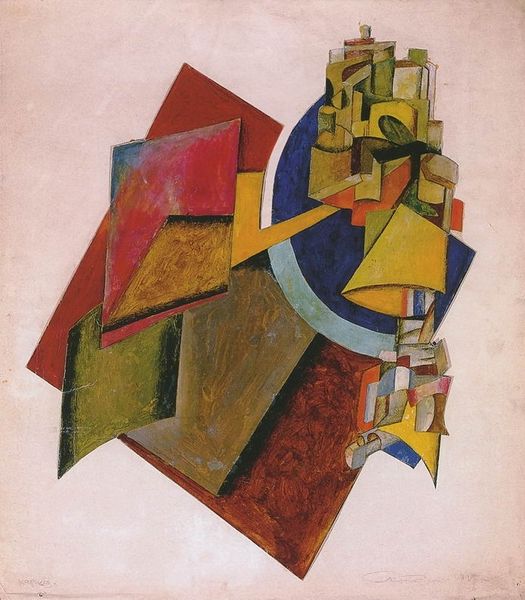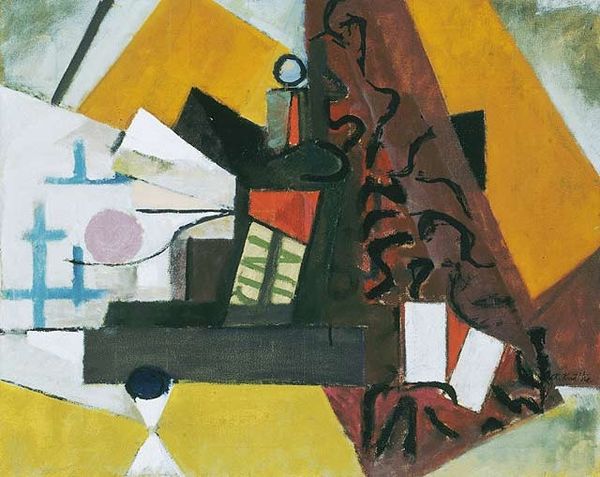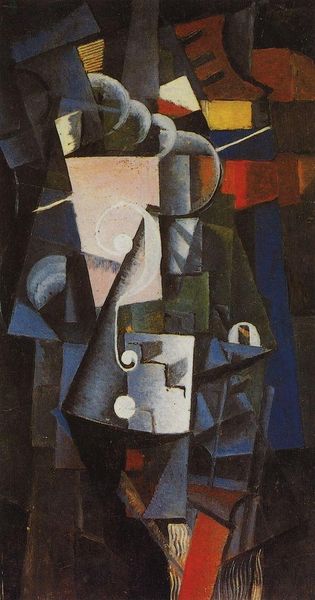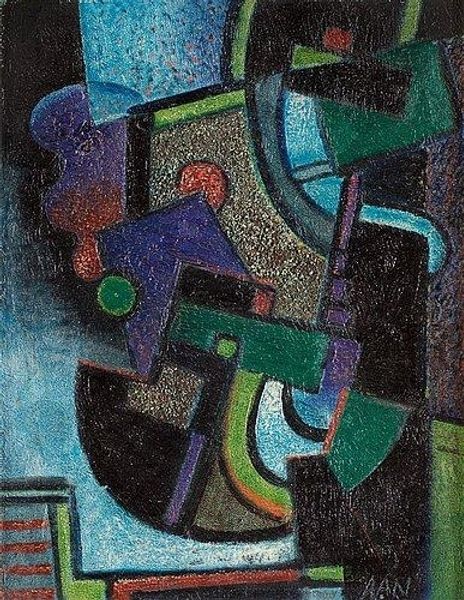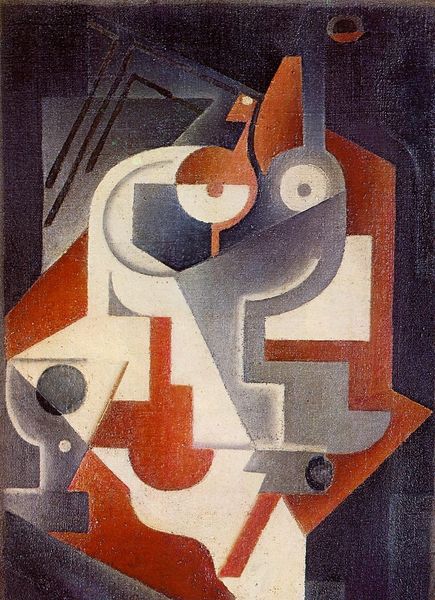
painting, watercolor
#
cubism
#
painting
#
watercolor
#
geometric
#
abstraction
#
watercolor
Dimensions: 26.7 x 21 cm
Copyright: Public domain US
Editor: This is Picasso's "Pedestal," a watercolor from 1920. I find the interplay of geometric shapes and muted colors quite striking, almost like a deconstructed still life. How do you interpret this work from a formalist perspective? Curator: Formally, the composition is a study in contrasts. Observe how Picasso employs juxtaposing planes, fragmenting the subject into essential geometric forms. The painting challenges our perception by presenting multiple viewpoints simultaneously, characteristic of Cubism. Editor: I see that now, the different angles kind of clash but also fit together. What about the colors? The greens and blues against the red... it feels intentional. Curator: Precisely. Color functions here not as a descriptor but as a structural element. Note the way the cool blues and greens recede, while the vibrant red demands attention, creating a dynamic visual tension. The arrangement guides the eye through the abstracted space, forcing active engagement with the composition. How does the materiality of the watercolor affect your interpretation? Editor: It makes the image feel less imposing, more delicate. Like the shapes could shift at any moment. Curator: Indeed. The translucency of watercolor contributes to the painting’s ephemeral quality. The visible brushstrokes and slight bleeding of color emphasize the artist's process. Editor: This breakdown has really made me appreciate how Picasso uses form and color to create such a complex image with simple shapes. I am so grateful! Curator: And I, you, for this close collaboration and study on the elements that create new impressions.
Comments
No comments
Be the first to comment and join the conversation on the ultimate creative platform.
